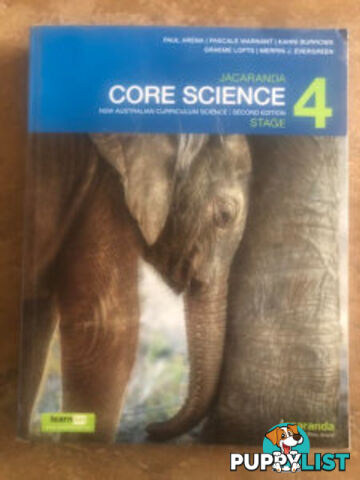This ad is on hold, please check again later.
Planet Earth - Episode 10 (Seasonal Forests) ( Study Guide)
$7.50

DESCRIPTION
Planet Earth is a BBC production with five episodes in the first series (episodes one through five) and six episodes in the second series (episodes six through eleven). Each episode examines a specific environment, focussing on key species or relationships in each habitat; the challenges they face; the behaviours they exhibit and the adaptations that enable them to survive. Recent advances in photography are used to achieve some spectacular 'first sights' – in particular, stabilised aerial photography gives us remarkable views of migrating animals and the techniques used by their predators to hunt them. As the series examines pristine environments where possible, they are often extreme. These are the parts of the world where few humans have chosen to live as the climate and landscape is too challenging, too difficult and dangerous. The plants and animals that do survive here have made some spectacular adaptations in forms and behaviour to live in these far reaches of the planet. The series is suitable for middle secondary students studying Science and SOSE, and for senior secondary students of Biology, Environmental Science and Geography. Few ecosystems on this planet can offer a stable year-round ecosystem and some of the most dramatic variations are found in the seasonal forests, the coniferous and deciduous forest which must adapt to sometimes extreme shifts in climate. Not only must the trees themselves cope with the seasons but the animals that live in and on them must develop their own strategies for survival. These may include migration, hibernation, scavenging and storing, among others. This episode begins in the far north, the taiga coniferous forest that bounds the treeless tundra of the arctic. Here the 'summer' growing season may last no more than a month and the habitat is limited. Animals being unable to rely on the trees for permanent feed must find a range of techniques to live through the hard times or, like the birds, simply fly in for the short productive season. Moose can chew on the tough pine needles year round, being one of the few grazers that can tolerate the resins that they contain but predators like the lynx must move continually in the hope of finding a small rodent under the snow or the dead and frozen carcass of a large grazer. Further south, the magnificent Pacific coast forests have a far longer, milder climate which supports what are now the largest trees on earth, the giant redwoods. However, the habitat is still not rich in food sources so the animal life is scarce compared to broadleaf forests. Here we see the wolverine, a ferocious carnivore and scavenger which survives by the dual strategy of outrageous gluttony and storing whatever it cannot finally force down its throat. Squirrels also store for the winter though pine nuts are their choice while they in their turn are hunted through the branches by gray owls and weasel-like pine martens. Deciduous forests are entirely different, adapting to the changing seasons by abscission, the process of leaf loss in winter or in the dry season. Here we see the swing of the seasons from spring to autumn, the tumbling of ducklings from roost holes in the trees and the struggle of red deer males as they fight for control of territory and females. But the most remarkable sight is the sudden eruption of periodical cicadas from the ground, billions of insects that live on a seventeen year cycle and so overwhelm and outmanoeuvre the many predators that seek to take advantage. The spring thaw in the deciduous forest is a remarkable sight as the ground plants grow rapidly and bloom in their attempt to use the available light before the trees come fully into leaf – the forest floor becomes a vivid carpet of flowers. Finally we see one of the most remarkable seasonal forests, the giant baobab trees of Madagascar which survive the dry season by storing water in their fattened trunks and open their massive flowers at night for the moths and mouse lemurs to fertilise. Whatever plant and animal species live in the seasonal forests, boreal, temperate or tropical, they must develop strategies to cope with the changes in season, the periods of flood and famine. SKU: SG416 Visit our website to view thousands more products like this and order online at:ADDITIONAL INFORMATION
- Price
- $7.50
- Condition
- New
- Delivers To
- Australia Wide








